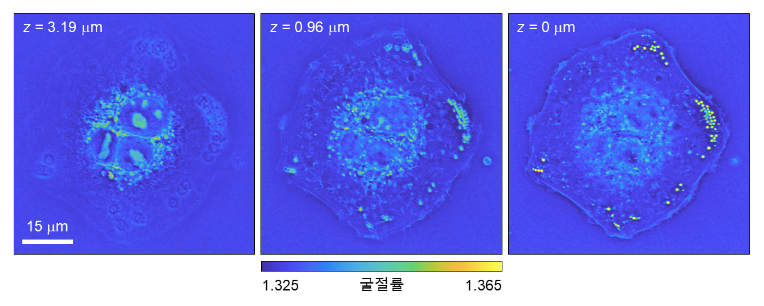Prof. YongKeun Park’s group at KAIST has developed a novel method of non-interferometric holographic imaging, which opens up a new possibility of holographic imaging for optical, electron, and X-ray microscopy. The study was published online in Nature Photonics (Intensity-based holographic imaging via space-domain Kramers-Kronig relations, Nature Photonics (2021))
Holography, a technique that records a wave, has advanced imaging science by measuring the change in waves after wave-matter interactions. The key to holographic imaging is the conversion of optical phase information to intensity, which is commonly achieved by interferometry. However, the interferometric approach is challenging because it requires a complex setup, a coherent source and a long-term stability. Other researchers have proposed computational approaches as alternatives, but previous non-interferometric approaches have limited application because of strict a priori information and assumptions. The researchers developed a novel method to retrieve optical phase from intensity. Inspired by Kramers-Kronig relations, which is often used to describe the relationship between refractive index and absorption of a material, the researchers found out that the optical phase is expressed in terms of intensity, if a sample is illuminated at certain angles. The researchers experimentally acquired holographic images of microscopic objects using an optical microscope simply by controlling the incident angle. Furthermore, they achieved three-dimensional refractive index tomography of specimens by combining the holographic images measured at different incident angles. Resulting tomographic images of lung cancer (A549) cells reveal sub-cellular structures with high spatial and temporal resolution. This work was supported, in part, by the National Research Foundation of Korea.

Dr. YoonSeok Baek, Prof. YongKeun Park Dept. of Physics, KAIST
Homepage: http://bmol.kaist.ac.kr
E-mail: yk.park@kaist.ac.kr






